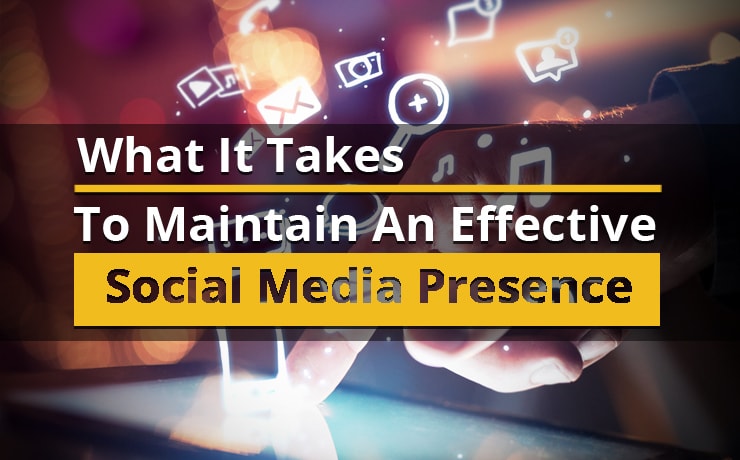Targeted Content: How To Write For Your Audience

SmartSites
Let’s take a second and imagine that you just started living alone for the first time. Dinner time is rolling around soon and you want to try cooking for yourself for a change. You remember you have some steak in your fridge and figured this would be the perfect chance to bust out your new grill.
But you don’t know how to cook very well and reading through a cookbook sounds WAY too daunting of a task. So you do what any normal person would do and go to Google. You probably search something along the lines of “how to cook a steak”.
You’re shocked as the first entry you see is exactly “How to cook a steak” and even tells you the steps right there on the search results page. It’s what you searched for word-for-word so you click in to get the full recipe. Before you leave the site asks if you want to share your email for more ways to cook steak and even more recipes to try. They’ve been helpful so far so you happily agree to share.
And just like that you are one of many that have been converted by a successful targeted content campaign. Right from the initial search the website strategically crafted content that was not only appealing but was also tailored to match your exact needs at that moment.
As a business owner, implementing targeted content into your marketing strategy is a MUST. Targeted content allows for you to create great consumer focused content that leads to more engagement and brand loyalty which equals more conversions.
Crafting content to the needs and interests of your audience allows for them to buy into the brand more and allows them to build a relationship with you. Over the course of this article we’ll dive into what makes great targeted content and a step-by-step guide on how you adopt this strategy into your own operations including the following:
- What is Targeted Content
- How to Identify Your Audience
- How to Create a Targeted Content Strategy
What is Targeted Content?
Targeted content is content created to appeal to a specific audience or group. It should be tailored to respond directly to their needs or interests in order to build trust and establish a relationship.
Why is targeted content important?
Because by delivering relevant content to people when they need it is way more likely to result in a conversion whether it be signing up for a newsletter or buying your product. You want to create content that resonates with the group that you ACTUALLY want to reach.
How do you identify which content to target?
Have you ever bought a hat that says it’s “One size fits all” and when you try it on it doesn’t fit? Content is the exact same thing. You’re never going to create something that appeals to everyone. So it’s best to create content that works best for someone who is more likely to benefit from the information, service, or product you can provide.
It’s really important to remember this early on in the development stages of your Marketing plan and especially during your keyword research. Just because a keyword or phrase gets a lot of traffic does not mean it is something that your business should target.
Instead, when creating targeted content and developing keywords ask yourself “What does my audience want to know”.
Now when you asked yourself that you might’ve come up with an answer right away. But the majority of you probably thought “How do I know what my audience wants to know?” Which brings us into step 2.
How to Identify Your Audience
Before you can actually get into what your audience wants to know, you first have to understand who your audience is. This is usually determined by a lot of different factors like demographics, physiographics, geographic location, age, income, and the list goes on and on.
But the honest truth?
While knowing this data is great, in the long run it doesn’t mean much without context.. Instead you need to understand why your audience is searching for these queries in the first place. What was the intent for their search? What problems were they looking to solve?
Exercise Empathy
Have you ever heard the phrase “try walking a day in my shoes”? Well instead you’re going to walk a day in your customer’s shoes. Try looking at things from their perspective. If you were looking to resolve a problem what would you search for? What would those problems look like for you in this scenario? If that’s still not clicking for you try asking yourself the following:
“If I were a customer…”
- What issues would I be facing?
- What would I do to resolve this issue?
- What motivates me?
- What things do I hate?
- What expectations do I have?
Understanding your audience’s pain points and mindset is the first step in understanding who exactly you are trying to reach. Let’s go back to the steak example for a second.
Consider Search Intent
If you search “How to cook a steak” you probably are looking for information not necessarily a purchase. So in this case if i’m targeting the phrase “how to cook a steak”, writing a piece on the best skillets or grills to cook steak on doesn’t really make a lot of sense does it?
A piece on the best equipment for the steak doesn’t solve the issue or query they were looking for in the first place, so they are more likely to go to another source to get their information.
So now that we know how to identify our audience, how do we create targeted content catered to them?
How to Create a Targeted Content Strategy
So you’ve identified your target audience. Great! Now the next step is creating content that resonates with them specifically. We do that by creating content that solves or gives information on the pain points we assessed in step 2, but now we take it a step further.
To truly understand what our audience’s pain points are we need to hear it from our audience directly.
How Do We Get Feedback Directly from Our Target Audiences?
Reviews. Reviews are your best friend. They are going to be the central point when you are conducting research on your consumer base and understanding what exactly they are looking for. Not only are they a good source of feedback from your target audience but they also allow for you to understand the problem they are trying to solve.
Listen to Customer Concerns and Adapt
Let’s go back to that steak example one last time, except this time I am in the market for a new grill, and you happen to sell them. While looking through your competitors reviews you stumble upon this:

You see that your competitor has a good grill but many people are complaining it is very hard to assemble and the instruction manual is not clear. Using this information, you update your product page to include the following under its features.
- Easy to assemble
- Step-by-step Video Guide for assembly
Now if I’m a customer that doesn’t like hard assembly looking for a grill and I see the reviews and both products which one do you think I am more likely to pick?
That’s the beauty of targeted content. If I love building things, I might still go for the other grill, however the targeted audience of those who don’t like hard assembly are way more likely to be drawn to your product.
You identified a pain point, addressed how you could solve that issue for a specific group, and created content that would appeal to them specifically. This is why it is so important to use these testimonials and reviews as a resource and not just social proofing.
Never Stop Researching.
It also doesn’t have to be just your reviews, either. Research your competitors’ reviews, their testimonials, even social media and forums to understand what issues their customers are facing and what they might search for given that problem.
You’ll also use that information when conducting your keyword research. I would much rather create a blog/article targetinga phrase that gets 2000 monthly searches compared to one that gets 10,000 if it means writing about something that relates to my audience specifically.
Keep Customer Focus Your Number One Priority
Don’t get me wrong, keywords are absolutely important when it comes to creating content, but remember the goal is to create “relevant content.” Your customers’ pain points should be the driving factor of your targeted content to give you the highest chance of them choosing your site in a massive sea of search results. To do that, you want to address that pain point in the title/product description.
But How Will I Know If I Identified My Client’s Pain Point Correctly?
That part is simple. Test. Test. Then test again. Look, your marketing strategies are not always going to go perfectly. That’s why you test–to see if your audience is resonating with the content you’re putting out. If they don’t, go back to step one and re-assess if you are addressing the right issues or if you are matching their search intent.
- Check your analytics and see if your audience is finding your content.
- Check to see if it is leading to conversions.
- Check to see if they are falling off somewhere in the funnel.
The personalization of creating the content is very important, but don’t forget that the data is just as crucial and is a tool to help you solidify your strategies.
So now we’ve made it to the end. Congrats! You’re ready to implement this tactic and take your content strategies to the next level! But just remember this process is not an overnight solution and it takes time to learn and understand your customers.
So, take the time to define your ideal customer, conduct the research, and use personalization and data to optimize your content over time. With these strategies in place, you’ll be well on your way to creating a brand that your customers love and trust.
Not sure where to begin?
SmartSites can help you build your brand with branding design services!
 Free
Consultation
Free
Consultation Free
Google Ads Audit
Free
Google Ads Audit







